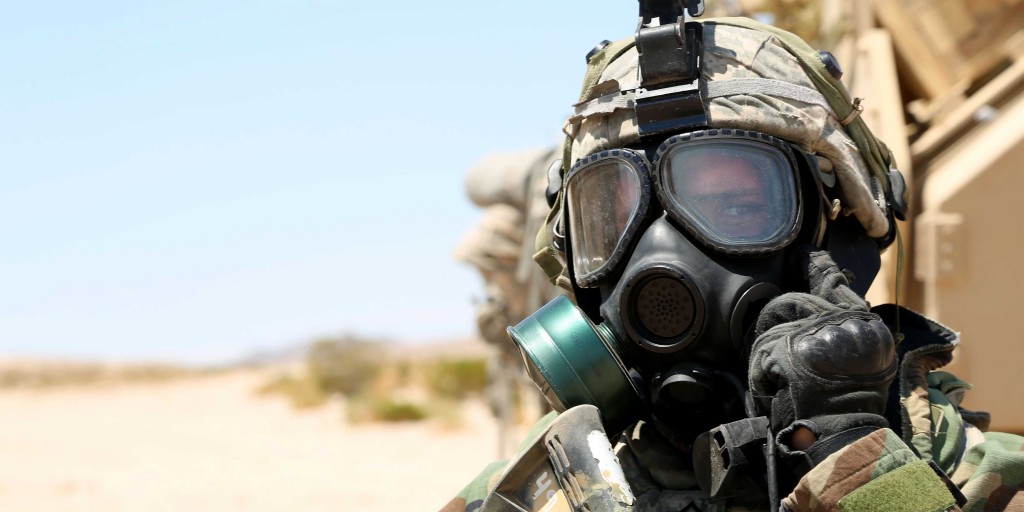In modern-day warfare, a biological weapon is defined by the use of biological toxins or infectious agents such as bacteria, viruses, and fungi with intent to kill or incapacitate humans, as an act of war. Entomological (insect) warfare is also considered a type of biological weapon. This type of warfare is distinctly different from nuclear warfare and chemical warfare, which together make up NBC, the military acronym for nuclear, biological, and chemical warfare, all of which are considered “weapons of mass destruction.”
Although there are more than 1,200 biological agents that could be used to cause illness or death, only a few of them have the necessary attributes to make them ideal for biological warfare or terrorism. Still, the ideal biological agents are relatively easy to acquire, process, and use. Only small amounts (often less than a pound) would be needed to kill or incapacitate hundreds of thousands of people in a metropolitan area. Biological-warfare agents are easy to hide and difficult to detect or protect against. They are invisible, odorless, tasteless, and can be spread silently. Colonel Alfred Abramson, the Joint Project Manager for Nuclear Biological Chemical Contamination Avoidance for
the U.S. Department of Defense points out that, “Prior to 1974, we used to look at bio-chemical weapons as an offensive position, since then, we switched over to defensive position,” Colonel Abramson’s responsibilities include the development, production, integration, testing, and fielding
of NBC detection, obscuration, and reconnaissance systems for the United States Armed Services. He works with a team of veteran government workers, military officials, and specialized contractors. His one agenda: deliver capability to the war-fighter, at the end of the day.
A nation or group that can pose a credible threat of mass casualty has the ability to alter the terms on which other nations or groups interact with it. Biological weapons allow for the potential to create a level of destruction and loss of life far in excess of nuclear, chemical or conventional weapons, relative to their mass and cost of development and storage. Therefore, biological agents may be useful as strategic deterrents in addition to their utility as offensive weapons on the battlefield.
Chemical weapons were first used in World War I, and, world nations immediately and unanimously decided that these weapons went too far. Killing people with bullets and explosives was one thing, while dispersing clouds of deadly chemicals or bacteria–which were unpredictable and uncontrollable–was another. It is an interesting paradox because despite the appearance of anarchy, warfare between modern nations does have rules. These rules, like the Geneva Conventions, for example, tend to discourage the wholesale destruction of civilians. Note, the rules are not always followed, and many times, they are completely broken, but they do exist.
As early as 1925, treaties prohibiting biological and chemical weapons initiated the “Protocol for the Prohibition of the Use in War of Asphyxiating, Poisonous or Other Gases, and of Bacteriological Methods of Warfare”, and were signed by most nations around the world. Offensive biological warfare, including mass production, stockpiling and use of biological weapons, was outlawed by the 1972 Biological Weapons Convention (BWC). The rationale behind this treaty, which has been ratified or acceded to by 170 countries as of April 2013, is to prevent a biological attack which could conceivably result in large numbers of civilian casualties and cause severe disruption to economic and societal infrastructure.
Many countries, including signatories of the BWC, currently pursue research into the defense or protection against bio-weapons, which is not prohibited by the BWC. Also, under the Chemical Weapons Conventions, states representing 98 percent of the world’s population and the chemical industry were supposed to be rid of chemical weapons by 2012.

